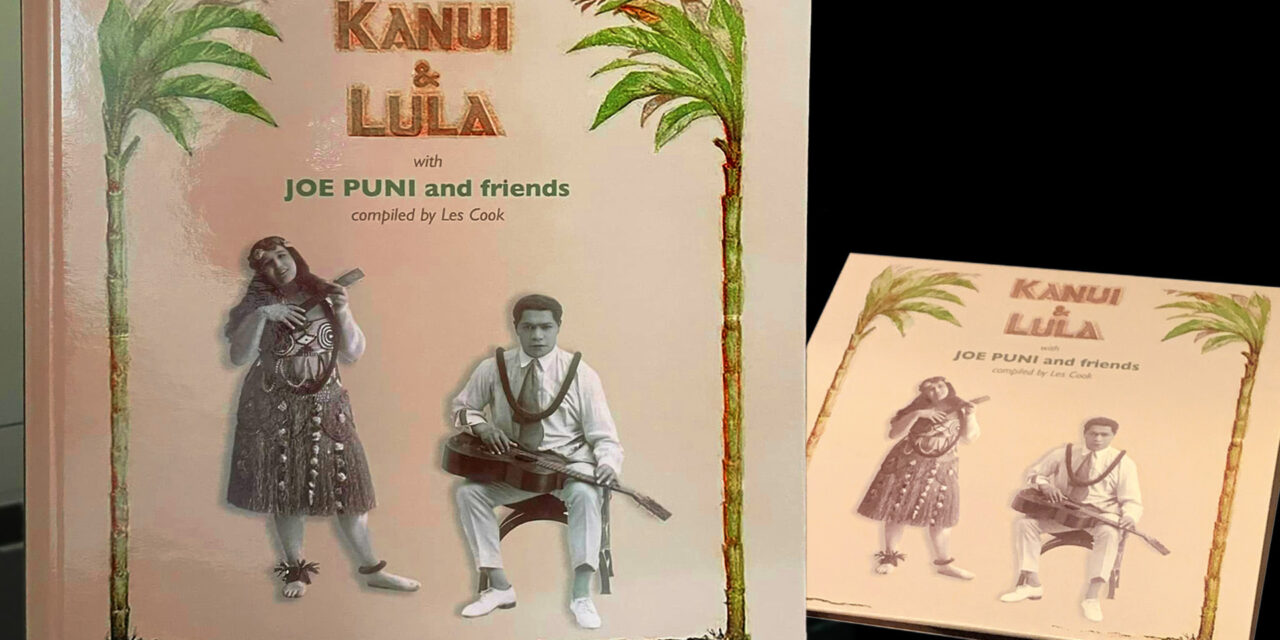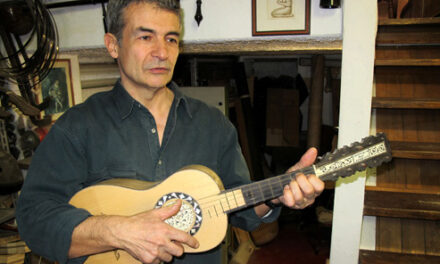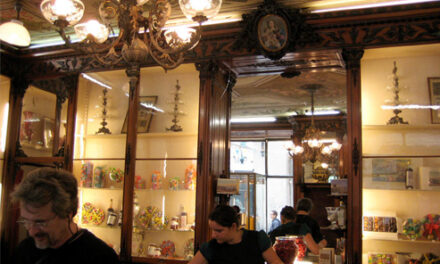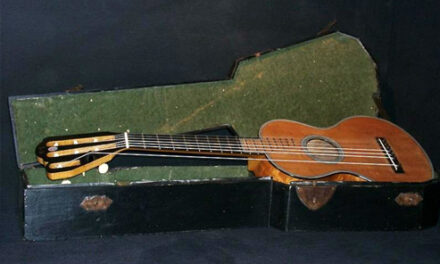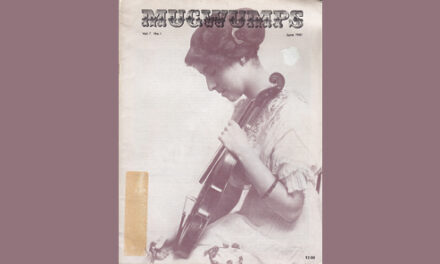In which I further detail the circuitous connections within and between my two biggest publications: i.e.: Vardon, Perry & Wilber(s)? and The James Shaw Family: A Hawaiian Musical Dynasty.
All thanks to friend and colleague Les Cook – who even just now threw in some new harp guitar images for us!
His latest Grass Skirts CD/book package (below: email Les to order) is Kanui & Lula with Joe Puni and friends, which focuses on the career and rare recordings of singer/steel player William Kanui and partner Lula. Joe Puni (and others) would sporadically join them for a trio.
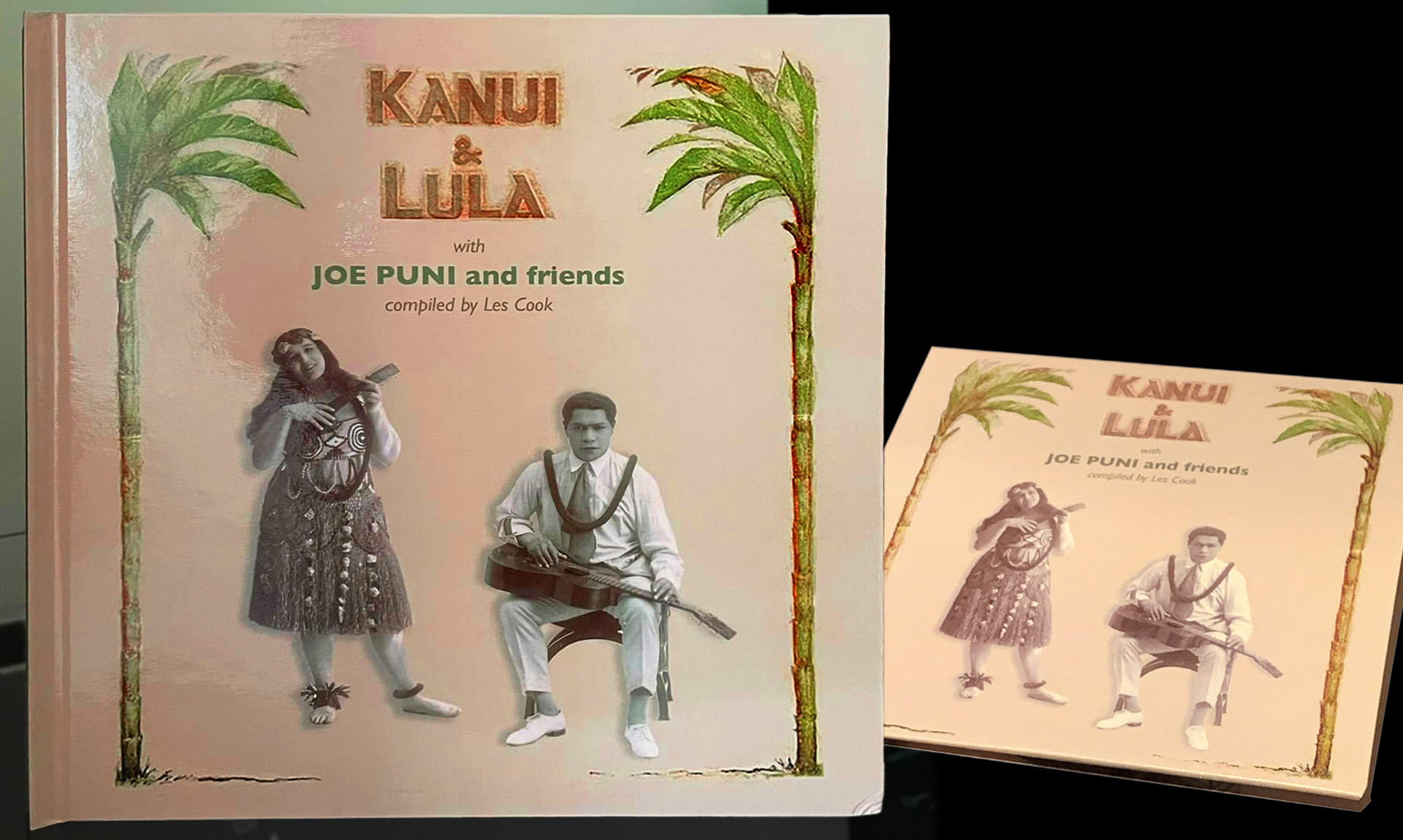
Unsurprisingly, both Kanui and Puni were born (many years apart) in Honolulu, home to most of the cast of characters in the extended James Shaw story. Though Shaw and family do not appear to have specifically performed with either Kanui or Puni, they all travelled in the same musical circles. As Joe Puni was just three years James Shaw’s junior, they undoubtedly crossed paths. In fact, we know that they shared many of the same bandmates and can find Joe Puni in Part 1 of my Shaw article performing at the 1901 Buffalo fair with a plethora of Shaw’s musical partners (this being one Expo Shaw somehow missed).
So, if you’re counting, we first have Joe Puni in the same circles as newly re-discovered Hawaiian singer and harp guitarist James Shaw.
For Coincidence #2, we jump three decades to Paris, where Kanui & Lula were based (she was Parisian, not Hawaiian) and Puni spent much of his time. There, in the early 1930s, Joe Puni played with steel guitarist Gino Bordin’s Hawaiian band. If Gino’s name sounds familiar, it’s because I featured him 11 years ago (also thanks to Les Cook), as he played a wonderful anonymous Mozzani-inspired harp guitar and had other harp guitarists in his band. Many of these were relocated Italians like Gino, with instruments like Pasquale Taraffo’s!
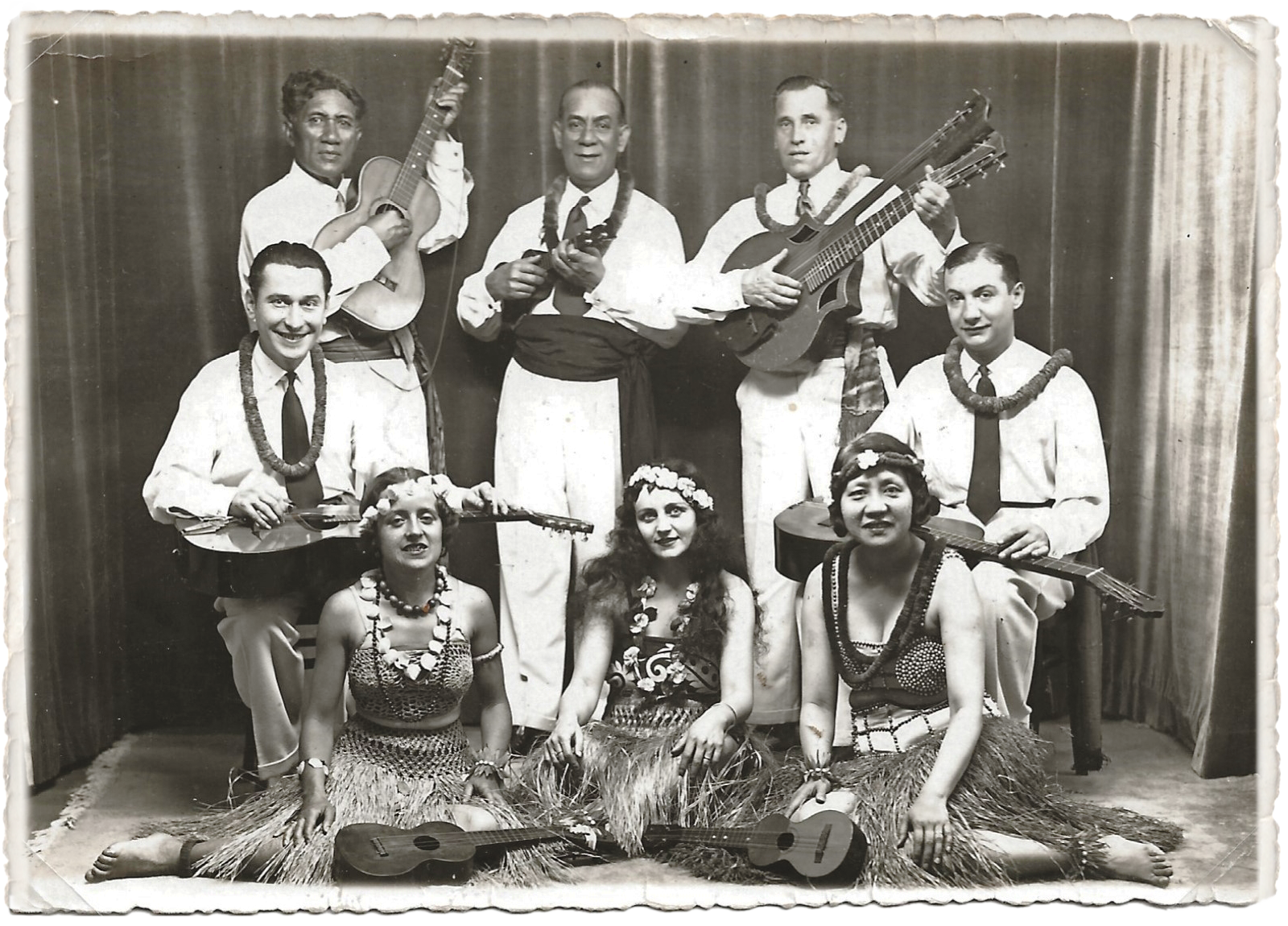
Above is yet another harp guitarist in Gino’s group, with Gino on steel at left, Joe Puni on guitar upper left, and the harp guitarist with a wappen-shaped Austro-German instrument. Quite the Euro-mash-up!
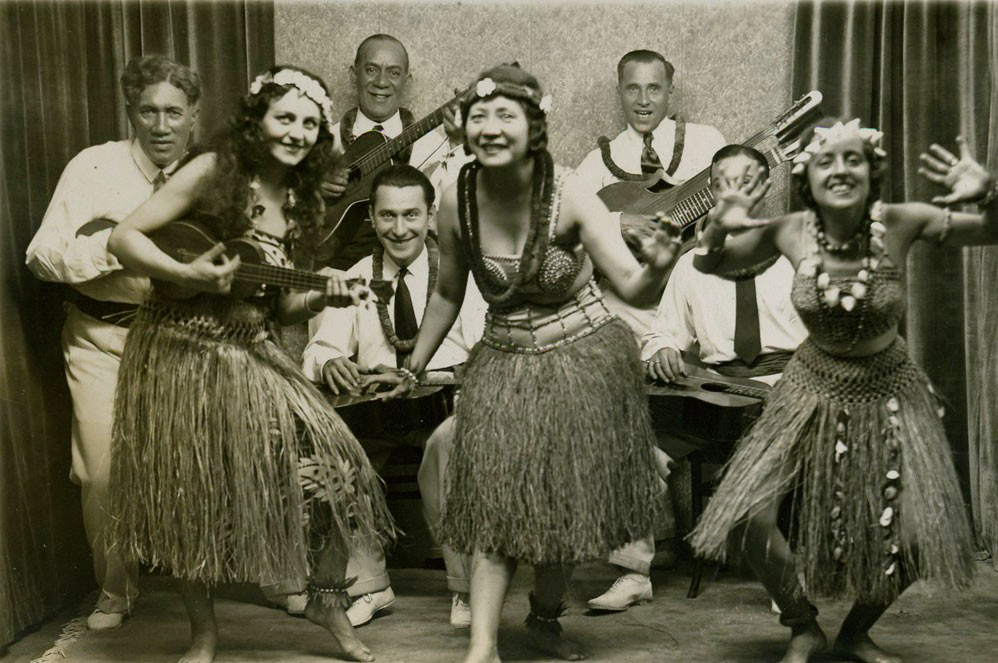
Another image of the same group (above) appears in the new Grass Skirts book.
Of course, I’ve pointed out innumerous times on this site how harp guitars were often part and parcel of Hawaiian music…but then, they appeared in nearly every form of instrumental American and European music in the early 1900s!
A final new photograph from Les (you can thank him by patronizing his work along with mine) is of Gino and non-Hawaiian band from the same photo session as appeared in my 2011 article (that, from a magazine spread Les supplied):
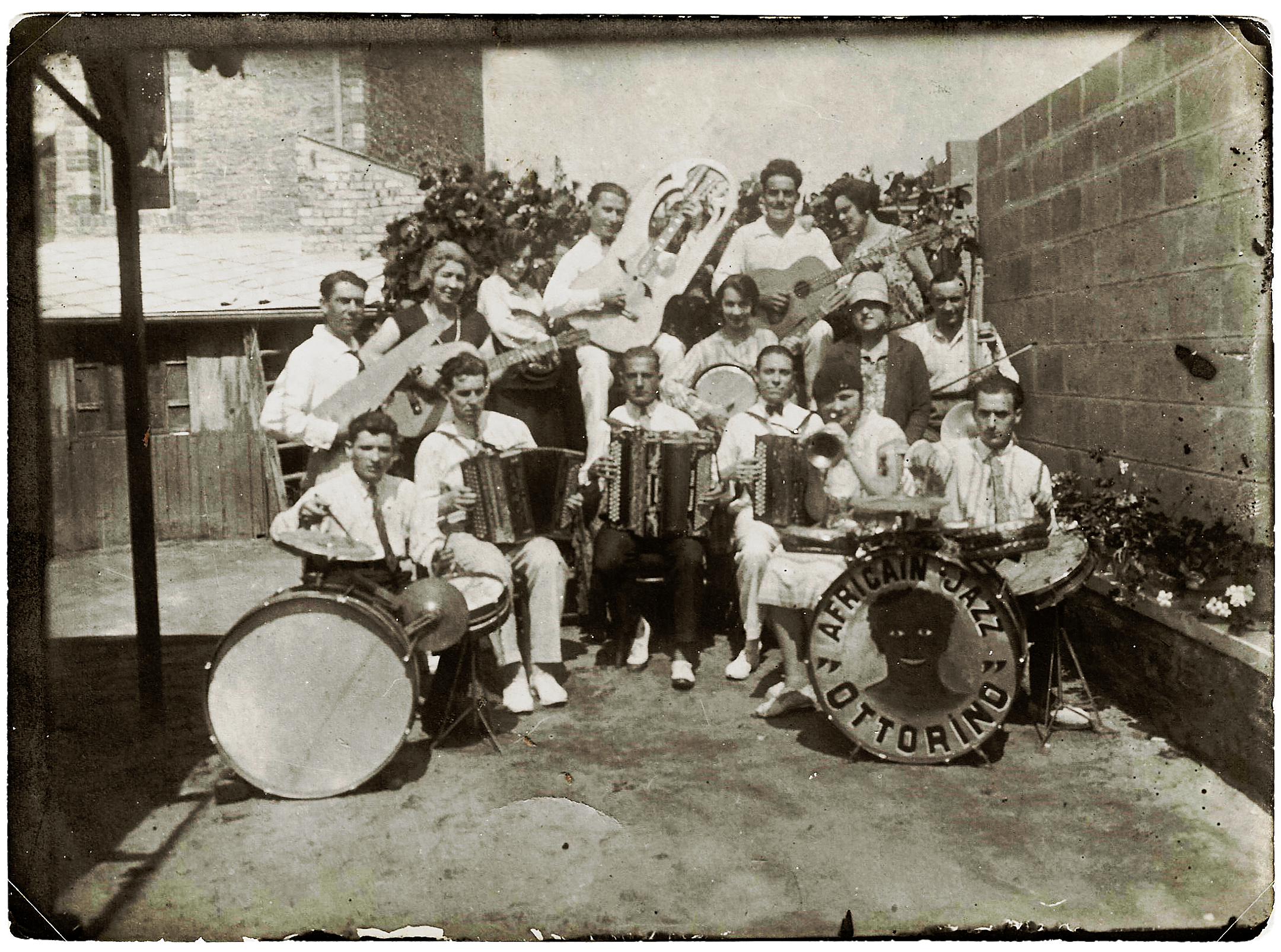
Note that everyone in the Ottorino African Jazz band has switched instruments in the magazine image, Gino handing off the musical saw to pose with the harp guitar. Note the double traps, multiple accordions, French banjos and Stroh-like bowed “stick.”
And now, Coincidence #3 (which even I forgot appeared in my own publication on p. 29):
For the full story of Vardon, Perry & Wilber(s)? you’ll have to buy the book, as I fully rewrote the history on the enigmatic trio, only hinted at in my various past blogs. For those who’ve read the book (this will be anticlimactic for the rest), I have an update for you:
I was wrong. I now believe that there was in fact no seventh Wilber (i.e.: “Stage Wilber No. 6”), but that this was the same Joe Wilbur (original name Joe Mack, professionally changed to Wilbur just for Vardon & Perry!). As always, the minute the book was printed I acquired two new VP&W postcards:
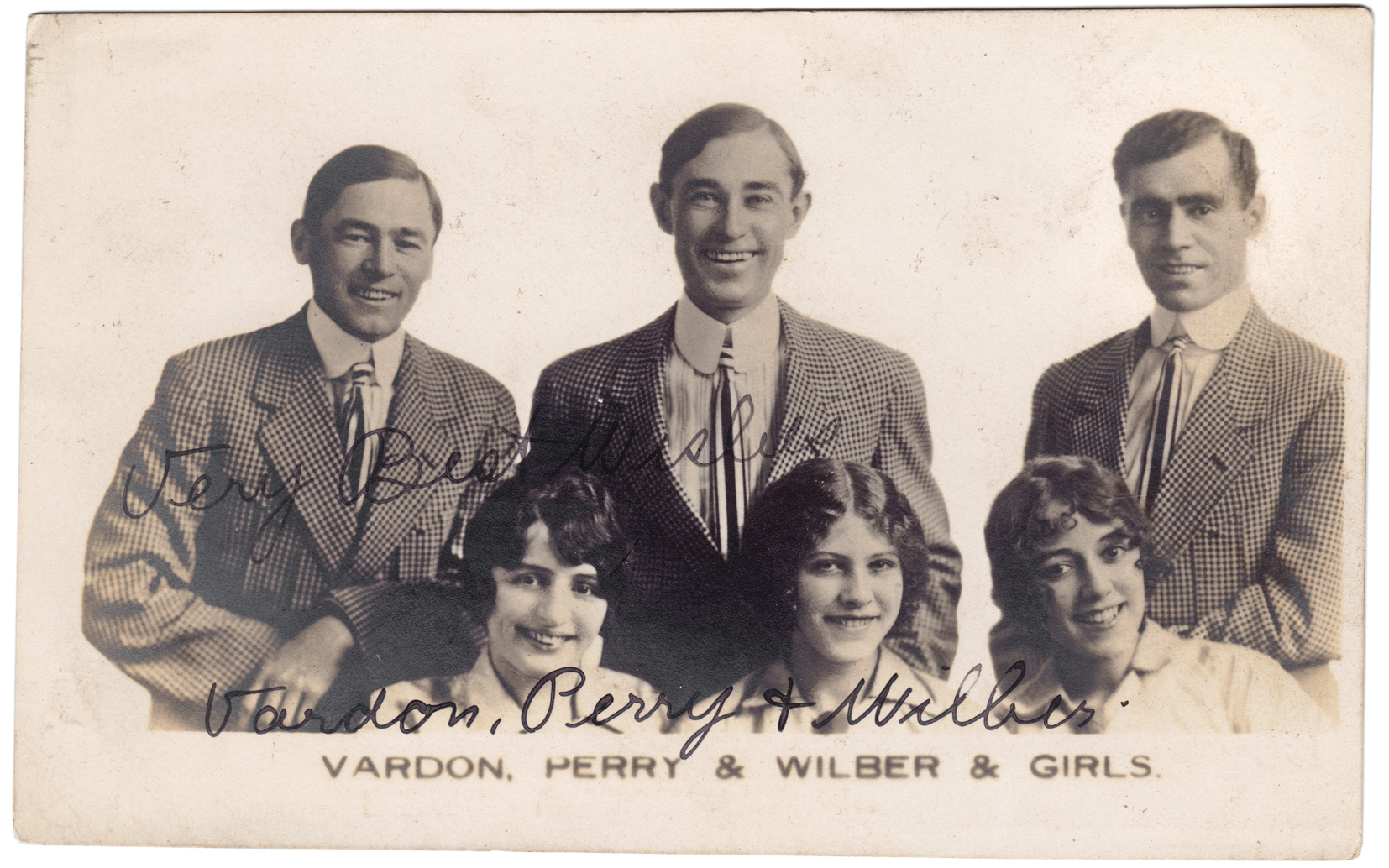
The first is the third or fourth image I’ve obtained of “VP&W & Girls” (actually the Ragtime Six), and finally has excellent detail of what I described as the “the Rod Serling-looking Wilber,” circa 1914. But, resolution aside, he still looks little like the obscure pictures of Joe Wilbur in the Savoy Quartet, shortly after (1915-1920). That’s him below on the guitar banjo:
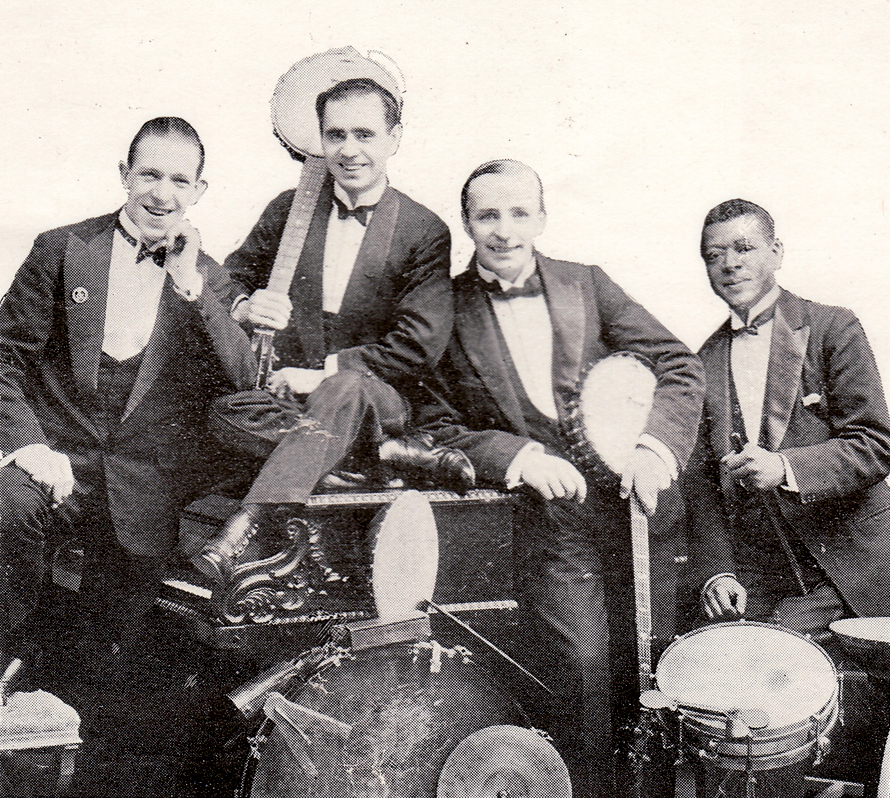 Image from my VP&W book, courtesy of Mark Berresford
Image from my VP&W book, courtesy of Mark Berresford
But then I lucked upon this striking new image of VP&W, without the Ragtime Girls:
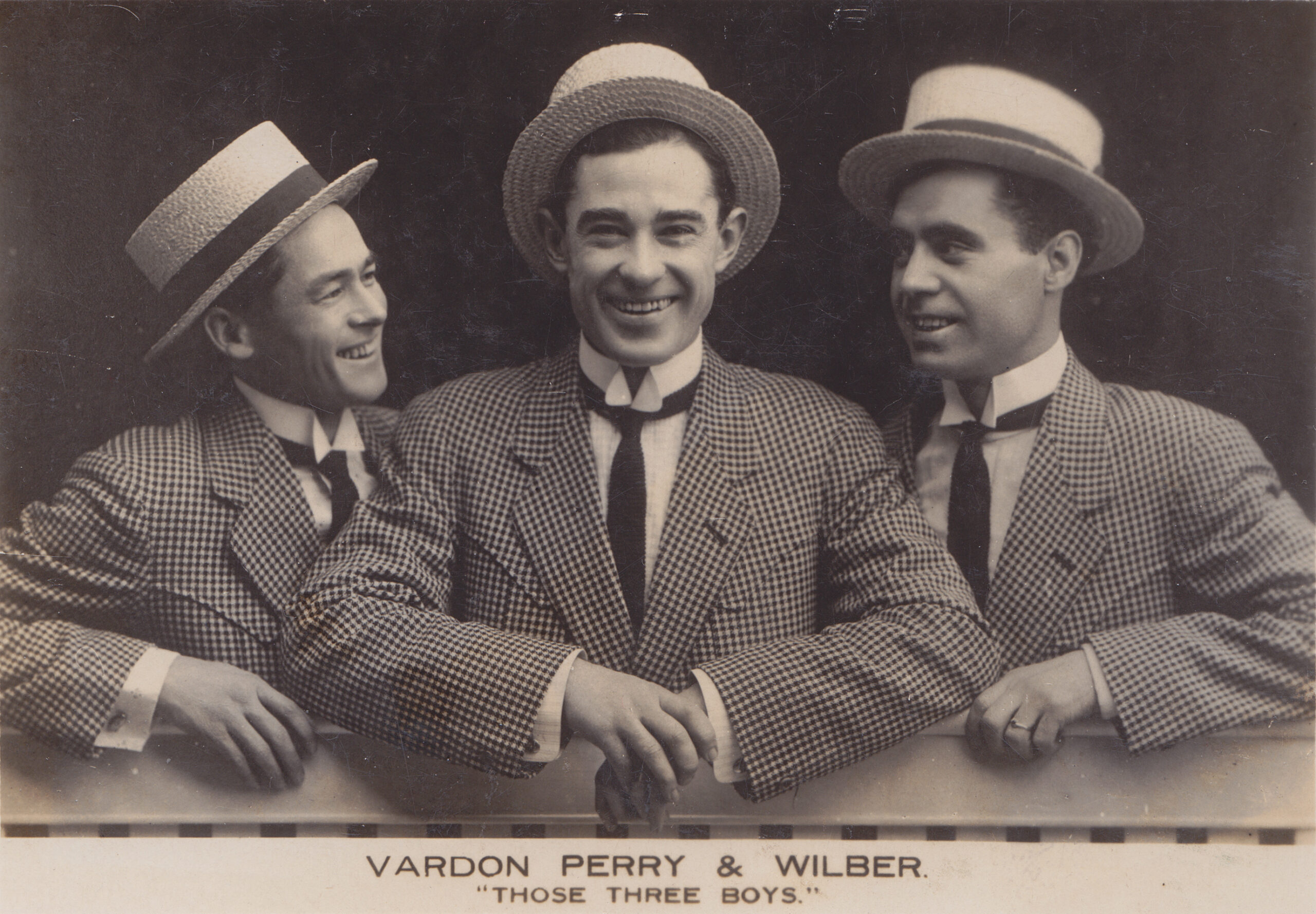
Wearing the same jackets, they appear (as always) in order of the act: Vardon, Perry, and “Wilber.” Indeed, Joe Wilbur. A fascinating study in 3-dimensional facial recognition via photography, I immediately noted that this Wilber’s features appear exactly halfway between “Rod Serling Wilber” and “Savoy Quartet Wilbur”! Apparently, it was just the haircuts and subtle angle change that confused me (and everyone else I canvased). I hope you know that, for me, this was a hugely rewarding conclusion to that part of the VP&W mystery!
OK, now that that’s resolved, what on earth has an American Vaudeville team possibly got to do with a Hawaiian musician in France?!
Ah – because VP&W’s final days were spent touring England. And when V&P went back to the States as a duo, Joe Mack/Wilbur stayed in England to join the Savoy Quartet, which recorded extensively. As Les writes, “Among the 80 or more titles they recorded were a handful of Hawaiian tunes of the Tin Pan Alley type…” But Joe also produced for their label (HMV), and brought in assorted Hawaiian musicians, likely including Joe Puni.
Here the story gets more complicated (see Les’ book). It seems that our VP&W Vaudevillian Joe Wilbur recorded his own Hawaiian duo music in 1923 in England, while Joe Puni also recorded there. What I didn’t know until now was that Wilbur and Puni were also business partners, managing two Hawaiian acts in England. One was the Hawaiian musicians cast for the famous Bird of Paradise play (recruited by Puni), the other was a group playing in the Savoy Hotel (where Wilbur’s quartet had been playing). What are the odds? Even more unbelievably, the Savoy gig included none other than Mekia (Major) Kealakai, the esteemed old Honolulu colleague of James Shaw.
It this a bizarrely small historical Hawaiian and harp guitar world, or what?!
Sincerest thanks to Les for not only listing me in his Acknowledgments, but for a nice personal plug within the text as well.
Yes, Les and I love geeking out on these rare discoveries and connections. I hope you do too!

